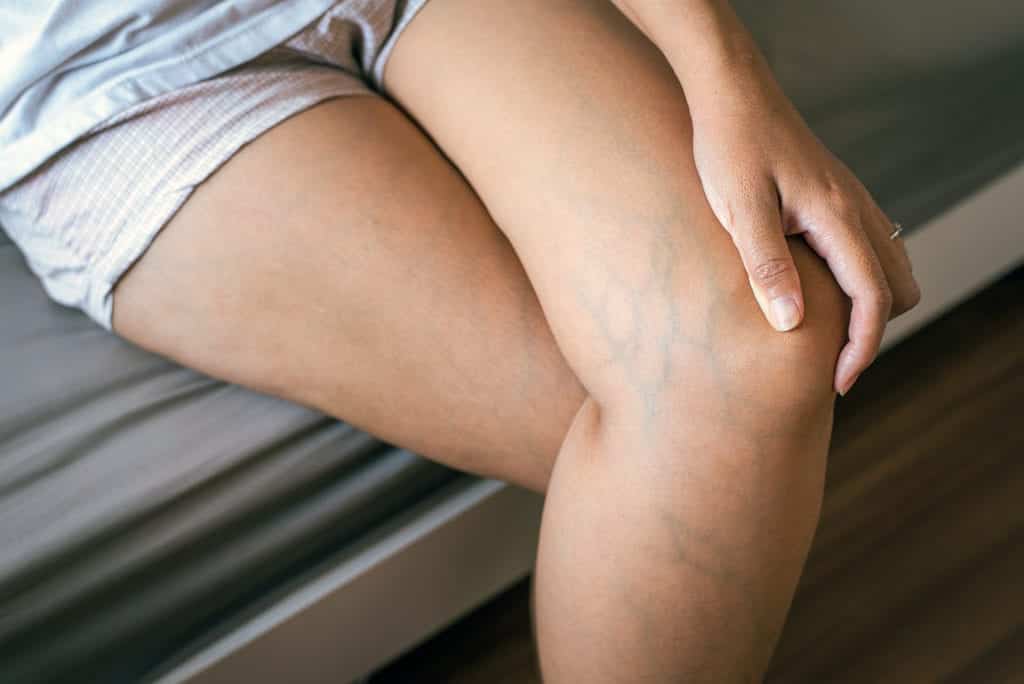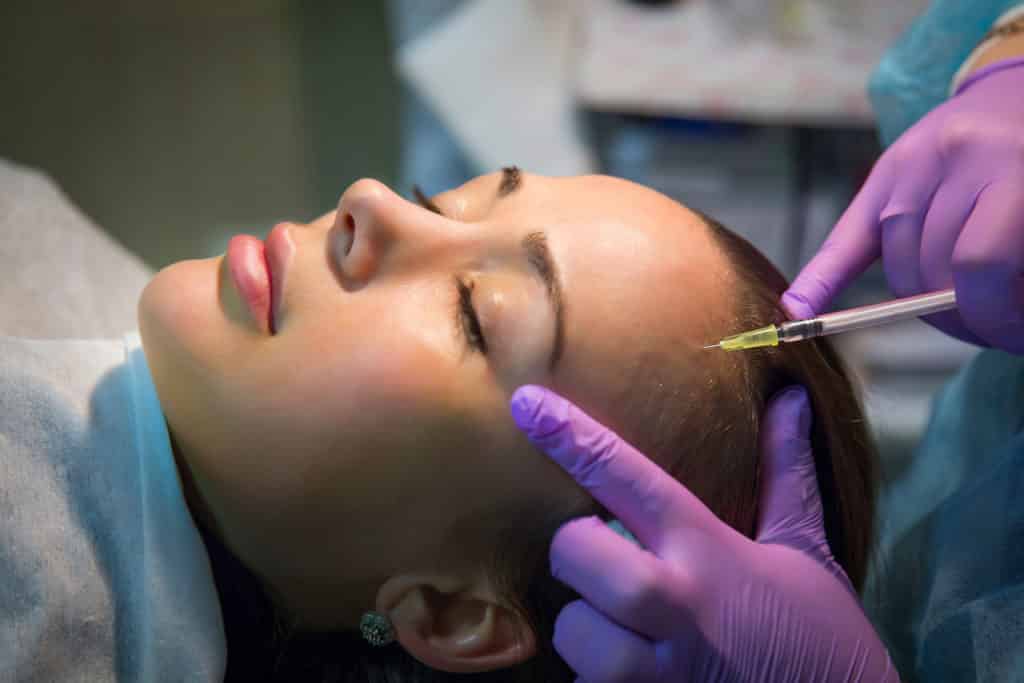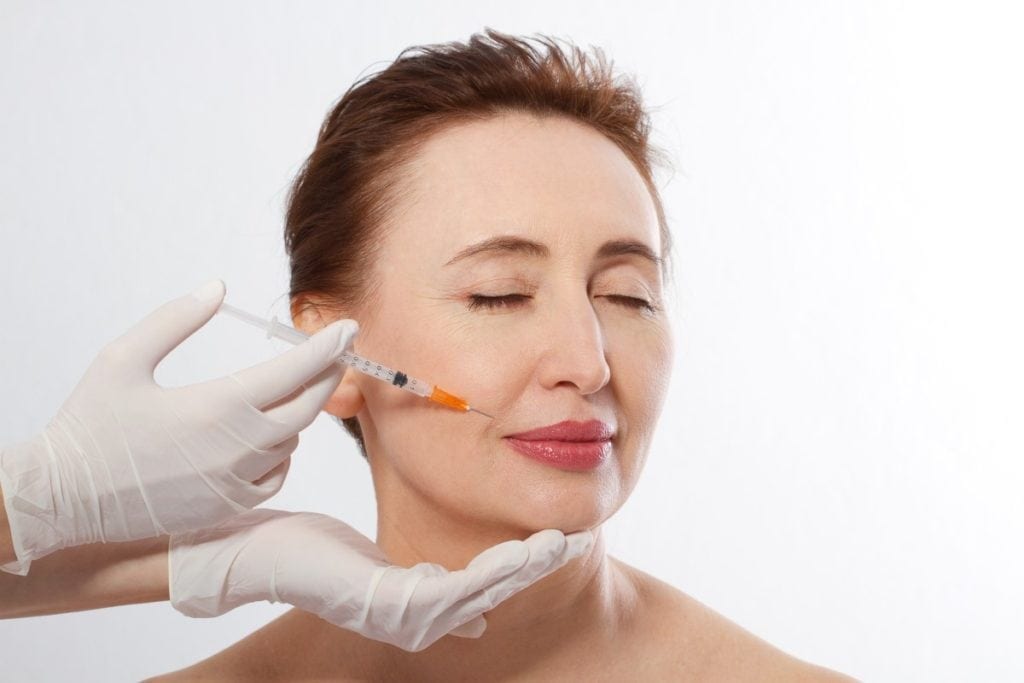

Sclerotherapy treatment for spider veins is an effective option for this unattractive condition. Spider veins are damaged blood vessels that are visible just beneath your skin’s surface. They typically appear as red, blue, or purple, and are most commonly found on the legs.
Spider veins are caused by several factors
There’s no one specific factor other than genetics, but obesity, standing for long periods, multiple pregnancies, and basic hormonal influences in the body can contribute to their formation. They often develop as you age.
Spider veins differ from varicose veins in that they are much smaller and can occur when the valves in the veins are still intact. Varicose veins occur when the valves that pump the blood in the correct direction are weakened by pressure on them. Blood begins to pool when it’s not being effectively pumped back up to the heart, which is why varicose veins look like bulging ropes in the legs.
How sclerotherapy treatment for spider veins works
Sclerotherapy is a trusted procedure that has been performed safely for 50 years. The procedure involves injecting a sclerosing agent (a solution or foam that irritates the blood vessels) into the targeted veins with small needles. The agent causes the vein to shrink, collapse, and disappear (or become much less visible). Blood is naturally re-routed into other veins in the surrounding area.
The procedure takes about 30 minutes per session, depending on the number of veins to be treated. For best results, we may recommend several visits, spaced out every four weeks. You will likely need a few sessions to achieve optimal results.
Even after successful treatment, spider veins may return especially if you are genetically predisposed to them. To reduce the risk of recurrence, it’s important to follow a thorough treatment plan and adjust your lifestyle after sclerotherapy.
You’ll have minimal downtime following the procedure
Most patients can resume normal activity immediately after sclerotherapy. Aside from some small bruises at the sites of injection, recovery time should be minimal.
It’s very important to walk around a bit following sclerotherapy treatment. Movement can help prevent blood clots and help the solution successfully coat the vessel walls. Additionally, you must wear your prescribed compression hose for up to one week. This helps vessel walls come into contact with each other and seal up.
We also suggest wearing compression hose on a regular basis to maintain results.
Prevent spider veins by following this advice
You can take preventative measures against spider veins. These won’t affect veins you already see — that’s what sclerotherapy is for — but they can help prevent new spider veins from forming or existing ones from progressing.
Exercise and movement
It’s not necessary to go crazy with an intense workout routine. Moderate activity on a regular basis can help keep veins robust. Walking, jogging, bike riding and swimming are all great options, because they activate the muscles in your legs and keep blood pumping through the veins.
Maintaining a healthy weight is also very helpful to minimize pressure on the veins in your legs.
Stand up!
If you spend a lot of time sitting – on your daily commute, at your desk, or on a plane – you are an ideal candidate for spider veins. Counteract all that sitting with a substantial amount of standing or walking. Get a standing desk, or create a routine that forces you to get up often during the day. A fitness tracker or the alarm app on your phone can remind you.
If you travel often by plane, walk up and down the aisles when possible, and wear compression hose on all long flights.
Wear compression hose during pregnancy
Pregnancy places a lot of stress on the body. Wearing compression hose is one of the best ways to prevent spider veins from occurring.
Sclerotherapy treatment can help you embrace shorts again!
Imagine being comfortable wearing shorts again on a warm summer day. Sclerotherapy treatment for spider veins is proven to be safe and effective, so schedule an appointment with us today. We will answer your questions and discuss a treatment plan that is most appropriate for you.
Posted In: FAQ
Related Posts

February 28, 2019
The Five Most Common Questions About Botox
Botox has become a familiar, household name for anyone who cares for their skin. In fact, it is often the first treatmen...

October 15, 2018
The Difference Between CoolSculpting versus Emsculpt
There are endless articles about CoolSculpting versus Emsculpt and which is better. They are two types of body contourin...

September 14, 2018
What Is the Difference Between Facial Fillers and Botox?
Time is undefeated. Thus far, humans have found no way to slow down the aging process, but scientists have developed a n...


